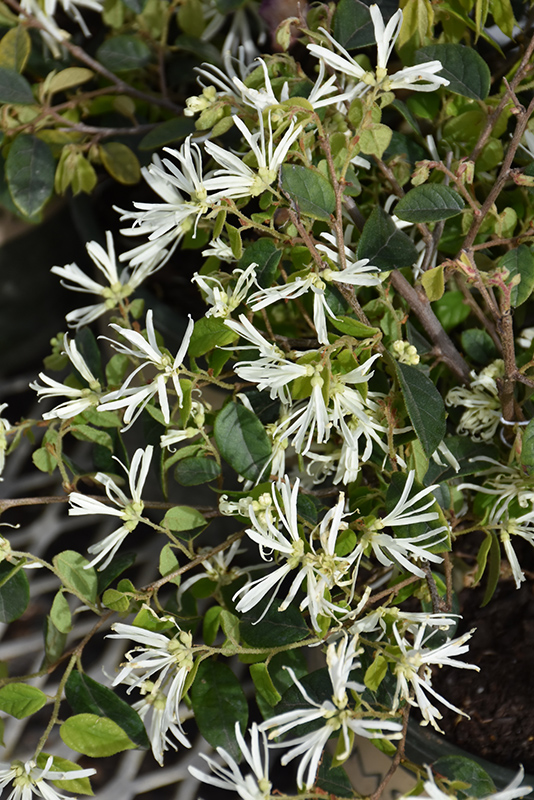Snow Panda Fringeflower
Description
A beautiful, loosely vase shaped shrub with snowy white strap-like flowers smothering the plant in spring; blooms are highlighted by sage green foliage; an easy to grow and well-behaved shrub for gardens or containers
Landscape Attributes
Snow Panda Fringeflower is a multi-stemmed evergreen perennial with an indistinguished habit of growth. Its relatively fine texture sets it apart from other garden plants with less refined foliage.
Snow Panda Fringeflower is recommended for the following landscape applications;
Planting & Growing
Snow Panda Fringeflower will grow to be about 10 feet tall at maturity, with a spread of 8 feet. Although it is technically a woody plant, this fast-growing plant can be expected to behave as a perennial in our climate if planted outdoors over the winter, usually regrowing from its base (crown) the following year. As such, gardeners should take into consideration that it will perform differently than it would in its native habitat.
This plant does best in full sun to partial shade. It prefers to grow in average to moist conditions, and shouldn't be allowed to dry out. It is particular about its soil conditions, with a strong preference for rich, acidic soils. It is somewhat tolerant of urban pollution. Consider applying a thick mulch around the root zone in winter to protect it in exposed locations or colder microclimates. This is a selected variety of a species not originally from North America.
Snow Panda Fringeflower is a fine choice for the garden, but it is also a good selection for planting in outdoor pots and containers. Because of its height, it is often used as a 'thriller' in the 'spiller-thriller-filler' container combination; plant it near the center of the pot, surrounded by smaller plants and those that spill over the edges. It is even sizeable enough that it can be grown alone in a suitable container. Note that when growing plants in outdoor containers and baskets, they may require more frequent waterings than they would in the yard or garden. Be aware that in our climate, this plant may be too tender to survive the winter if left outdoors in a container. Contact our experts for more information on how to protect it over the winter months.

